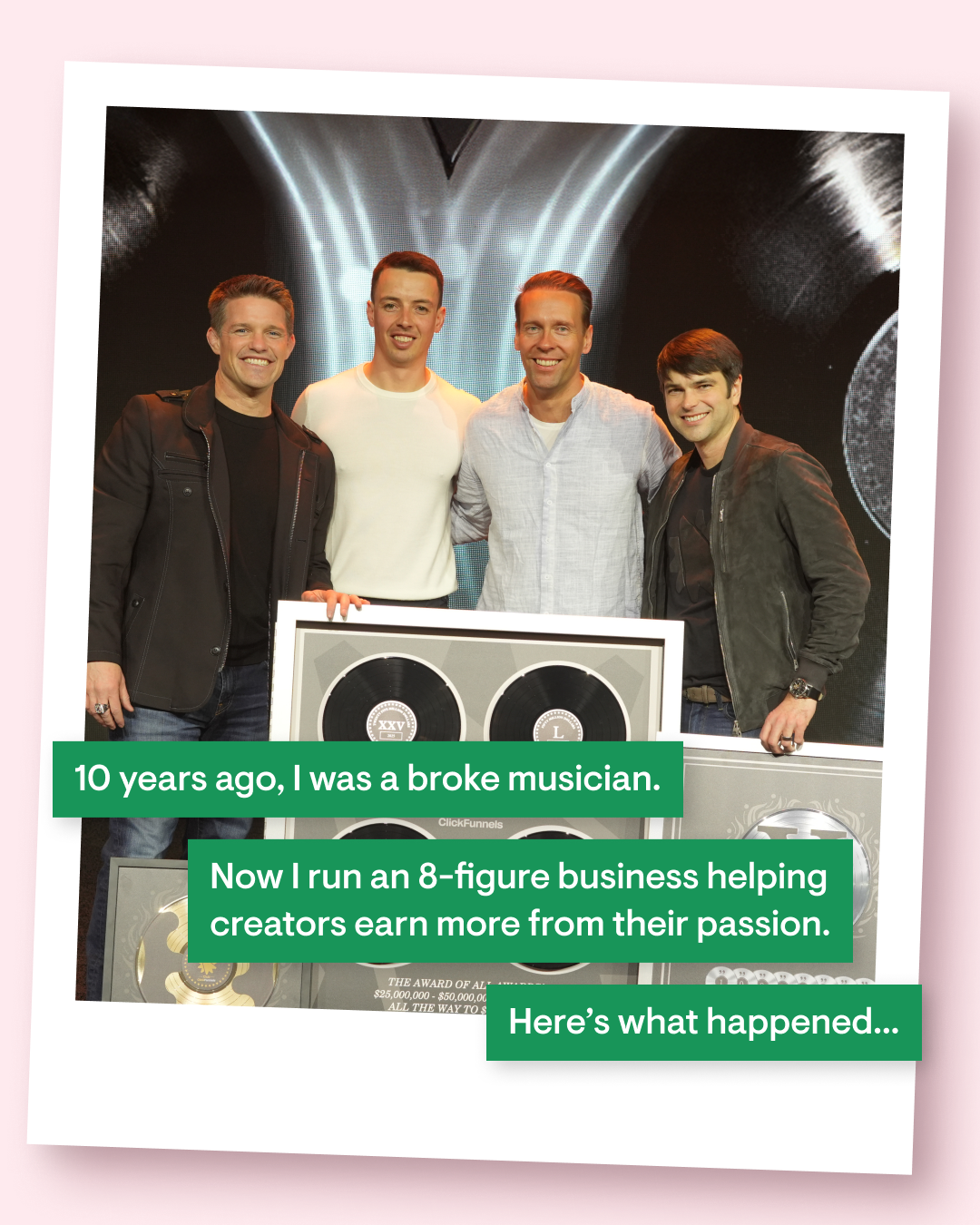Introduction
A study by ZDNet reports that 75% of content creators who earn a full-time income have experienced burnout, and this number increases to 83% among those earning less than an average income.
The endless need to post content often leads to burnout, a state of exhaustion where creativity dies and productivity plummets. By understanding the signs, prioritizing wellness, and fostering sustainable content practices, creators can safeguard their passion and maintain an online presence without spending their life on social media.
In this article we will discuss how to navigate marketing yourself on social media, avoiding burnout and how to maintain a sustainable pace.
Recognizing the Signs of Burnout

A. Understanding the Nature of Burnout
Burnout is more than fatigue. It's a chronic state where stress leads to diminished interest in work and a decline in performance. It’s essential to understand that burnout affects not just your work but your entire being, leading to a disconnection from what once fueled your passion.
B. Mental, Emotional, and Physical Signs
Burnout can manifest in various ways, impacting individuals on multiple levels:
Mental Signs
- Difficulty concentrating and staying focused.
- A sense of dissatisfaction with accomplishments.
- Decreased productivity.
- Persistent feelings of exhaustion.
Emotional Signs
- Feelings of detachment from one’s work.
- A failure to see the big picture.
- Increased irritability and reduced patience with others.
- Loss of motivation and interest in work.
Physical Signs
- Headaches and muscle pain, which can be persistent.
- Changes in appetite or sleep patterns.
- A weakened immune system, resulting in frequent illnesses.
- General fatigue that persists even after rest.
C. Importance of Awareness and Early Intervention
Early recognition and intervention are vital. By spotting the warning signs and taking immediate action, such as seeking support or adjusting workloads, creators can prevent the full impact of burnout and preserve their creative spark.
4 Ways Coaches and Creators can Fight Burnout
Building Your Creative Resilience Toolkit
Building Your Creative Resilience Toolkit means creating personalized strategies and resources to enhance and sustain your creative output. It's a proactive approach to protect your creativity against challenges, ensuring long-term productivity and well-being.
A. Create A “Second Brain”
You should never be in a situation where you’re waiting for creativity to strike. You need a library of ideas, references, and inspiration that you can look at whenever you need to create some content. Now whenever you have an idea, or see a great piece of content, you file it away in your Second Brain to use later.
Use an App: Apps like Trello or Notion can help you collect, organize and implement your ideas and projects, and you can collect ideas easily on your phone.
Set Up a Content Calendar: Plan what to create and when, and get ahead of schedule so you’re not in a rush (a common creativity-killer).
B. Diversifying Sources of Inspiration
Now that you have a pipeline for ideas, make sure to give it the best possible fuel. Keep your creative juices flowing with these practical steps:
Start a New Hobby: Something completely unrelated to your work, like pottery or astronomy.
Change Your Scenery: Work from different locations to get new perspectives.
Learn from Other Fields: Dive into topics outside your expertise to find unexpected inspiration.
C. Engaging in Creative Exercises Outside Your Niche
Sometimes we get stuck in our routines, so it’s important to shake things up and discover new ideas:
Try a New Art Form: If you’re a writer, try painting; if you’re a musician, try writing.
Join a Workshop: Participate in a class that’s not related to your main work.
Mix Your Mediums: If you usually work digitally, go analog for a change, and vice versa.
Prioritizing Wellness and Work-Life Balance

Wellness and balance are not just buzzwords; they’re the foundation of a sustainable creative life. Here’s how to weave them into your daily routine.
A. Take Care Of Yourself
Get Moving: Physical activity isn’t just good for the body; it’s a catalyst for creativity. As a coach or creator, when you’re physically active, you’re giving your brain fresh oxygen and a new rhythm of thinking. You can schedule a 30-min walk or yoga session for this.
Quiet Your Mind: Meditation can be a haven of calm in a busy creator’s schedule. It allows you to clear the mental clutter and focus on the present moment, which can lead to more profound creative insights. To make it a habit, try using a meditation app and do it at the same time each day, perhaps first thing in the morning or right before you begin your creative work.
Eat Well: Good nutrition fuels both body and mind. For creators, this means better energy levels and clearer thinking. Plan your meals to include brain-boosting foods like nuts, berries, and leafy greens. Planning a week’s worth of your meals in advance ensures you always have healthy options at hand.
Sleep Soundly: Quality sleep is non-negotiable for peak creativity. It’s when your brain processes the day’s learning and experiences. Establish a relaxing bedtime routine, like reading or listening to soft music, to signal to your body that it’s time to wind down. Keep your bedroom dark and cool for at least 7-8 hours of sleep.
B. Establish Your Boundaries
Define Your Work Hours: As a creator, it’s easy to let work bleed into every hour of the day. Setting specific work hours helps you stay productive while also ensuring you have time to recharge. Let others know about your working hours to set expectations.
Create a Dedicated Workspace: Having a space that’s just for work can help you switch into ‘creation mode’ and keep distractions at bay. Even if it’s a small desk in the corner, make it a place where you only do work-related activities.
Unplug Regularly: Regular breaks from digital devices can prevent burnout and keep your ideas fresh. Schedule ‘unplugged’ times during your day, even if it’s just for a short walk or a coffee break without your phone.
Say No: Learning to say no is a powerful tool for maintaining boundaries. It allows you to focus on what truly matters and prevents overcommitment. Practice polite but firm ways to decline requests that don’t align with your goals.
C. Effective Time Management Strategies
List Your Tasks: Writing down your tasks gives you a clear overview of what needs to be done. It’s satisfying to tick off completed items, and it helps ensure nothing gets forgotten.
Prioritize: Not all tasks are created equal. Identify the ones that will have the most significant impact on your goals and tackle those first. This ensures that your efforts are focused on high-value activities.
Set Deadlines: Deadlines create a sense of urgency and can spur you into action. They also help others know when to expect your work. Be realistic with your deadlines to avoid unnecessary stress.
Take Breaks: Regular breaks can actually make you more productive, not less. They give your brain a chance to rest and process information. Use break times to step away from your workspace and do something completely different.
Mastering the Art of Sustainable Content Production
Mastering the Art of Sustainable Content Production means developing a strategy that balances the need for consistent, high-quality content with long-term creator well-being. It's about creating content efficiently and effectively without compromising creativity or personal health.
A. Strategic Content Planning
This is your roadmap for future content. By planning ahead, you can ensure each piece of content has a purpose and aligns with your goals. Start by outlining your topics for the month, then break them down week by week. This not only helps prevent last-minute rushes but also gives you space to be creative within a structure.
Benefits: With a plan in place, you’ll feel less overwhelmed and more in control. It also means you can batch-create content, which is more efficient.
How to Apply: Use a digital planner or a simple spreadsheet. List your main content themes and the specific posts or videos you’ll create for each theme.
B. Balancing Content Quality with Quantity
Remember, it’s better to post one piece of excellent content than several mediocre ones. Focus on creating content that provides real value and resonates with your audience. This builds trust and establishes you as an authority in your field.
High-quality content can lead to a more engaged audience and higher retention rates. It’s the content that gets shared and remembered.
Set a standard for your content. Before publishing, ask if it meets your criteria for quality and if it’s something you’d be proud to share.
C. Batching Content Creation and Using Evergreen Content
Group similar tasks together to streamline your workflow. For example, dedicate a day to writing all your social media posts for the month, or record multiple videos in one session. This approach can significantly reduce the time and effort spent on content creation.
Invest time in creating content that remains relevant over time. This type of content can continually attract new viewers without needing frequent updates.
Batching and evergreen content can save you time in the long run and reduce the pressure to constantly create new content.
Schedule regular batching days. Identify topics that have lasting value and plan to create content around those themes.
Reigniting Your Passion for Creation

Rediscovering the spark that drives your creativity is crucial, especially when you’re feeling burnt out. Here’s how to get back to loving what you do.
A. Rediscover Your “WHY”
Think back to why you started creating in the first place. Was it to share a story, help others, or express yourself? Write this down and place it where you’ll see it every day.
Remembering your ‘why’ can reignite your motivation and help you push through tough times.
Set aside time each week to reflect on your achievements and the joy your work brings to both you and your audience.
Make a list of the parts of creating that you love the most and find ways to do more of those things.
B. Explore Additional Resources
Actively seek out books, podcasts, and courses that challenge and inspire you. Attend workshops or webinars that are outside of your usual scope.
New resources can spark new ideas and approaches, keeping your work fresh and exciting.
Make a ‘learning wishlist’ and commit to exploring one new resource each month.
Find groups online or in-person where you can share ideas and get support.
C. Join the Passion.io Community
Being part of a community like Passion.io can provide you with a network of peers who understand the ups and downs of creating.
A strong community offers support, accountability, and can be a source of inspiration.
Sign up for Passion.io and participate in discussions, challenges, and collaborations.
Use the community to share your work, get feedback, and learn from the success of others.
To know more about how Passion.io can help you scale and enjoy what you do, dive deeper and continue growing in your creative journey, explore these Passion.io resources:
Conclusion
Content creation burnout is a challenge that can be navigated with the right strategies. By recognizing the signs, building resilience, prioritizing wellness, and fostering sustainable practices, creators can continue to inspire and educate. Implement these strategies, join supportive communities like Passion.io, and discover your passion for creation. The journey is ongoing, but with these tools, you can thrive in the ever-changing digital landscape.














